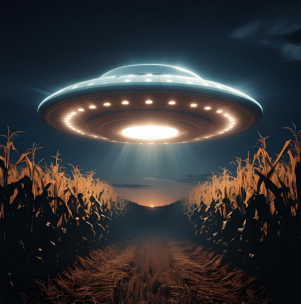
The fascination with Unidentified Flying Objects (UFOs) has captivated humanity for decades, sparking curiosity, fear, and a plethora of theories. From the iconic Roswell incident to recent government disclosures, the topic of UFOs continues to intrigue both skeptics and believers alike. In this article, we will explore the history, cultural impact, and recent developments surrounding UFOs, shedding light on this enigmatic phenomenon.
A Brief History of UFOs
The modern UFO phenomenon began in the mid-20th century, particularly after World War II. In 1947, a pilot named Kenneth Arnold reported seeing nine crescent-shaped objects flying at incredible speeds near Mount Rainier in Washington. His sighting is often credited with coining the term “flying saucer,” which would become synonymous with UFOs.
The Roswell incident in 1947 further fueled public interest. Initially reported as a “flying disc” recovery by the U.S. military, the narrative quickly shifted to a weather balloon, leading to widespread speculation about government cover-ups and extraterrestrial life.
Cultural Impact
UFOs have permeated popular culture, inspiring countless films, books, and television shows. From the classic “The Day the Earth Stood Still” to the modern series “The X-Files,” UFOs have been depicted as both threats and allies. This cultural representation has shaped public perception, often blurring the lines between fact and fiction.
Moreover, UFO sightings have become a staple of conspiracy theories, with many believing that governments are hiding evidence of extraterrestrial encounters. This has led to a subculture of UFO enthusiasts, researchers, and organizations dedicated to uncovering the truth.
Recent Developments
In recent years, the conversation around UFOs has shifted dramatically. In 2020, the Pentagon officially released videos captured by Navy pilots showing unidentified aerial phenomena (UAP) exhibiting flight characteristics beyond known technology. This acknowledgment marked a significant turning point, as it lent credibility to the long-held beliefs of UFO enthusiasts.
In 2021, the Office of the Director of National Intelligence (ODNI) released a report summarizing UAP encounters, stating that most of the 144 incidents investigated between 2004 and 2021 remained unexplained. The report emphasized the need for further investigation, highlighting the potential national security implications of these sightings.
The Science Behind UFOs
While many UFO sightings can be attributed to natural phenomena, misidentified aircraft, or man-made objects, some remain unexplained. Scientists and researchers are increasingly interested in studying these phenomena, employing advanced technology and methodologies to analyze sightings.
Astrobiology, the study of life in the universe, plays a crucial role in the search for extraterrestrial life. The discovery of exoplanets in habitable zones has reignited interest in the possibility of life beyond Earth. As technology advances, the potential for discovering evidence of extraterrestrial civilizations becomes more plausible.
Conclusion
The allure of UFOs lies in their mystery and the questions they raise about our place in the universe. As we continue to explore the cosmos and push the boundaries of our understanding, the quest for answers surrounding UFOs will undoubtedly persist. Whether they are a product of advanced technology, natural phenomena, or something beyond our comprehension, UFOs remind us of the vastness of the universe and the possibilities that lie beyond our planet.
As we look to the future, one thing is certain: the conversation about UFOs is far from over. With ongoing research, government transparency, and a growing interest in the unknown, we may be on the brink of uncovering truths that have eluded us for generations. Whether you are a skeptic or a believer, the mystery of UFOs continues to inspire wonder and curiosity, inviting us to explore the skies above and the possibilities beyond.
